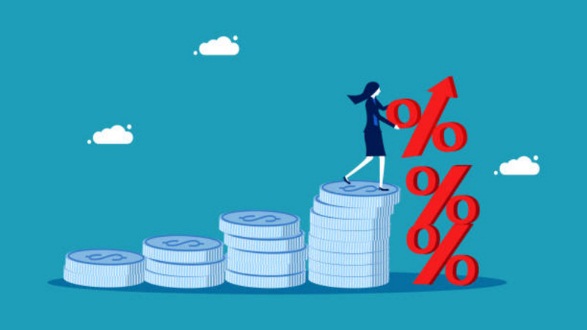How Federal Reserve Decisions Impact Your Credit Card Rates?
Aug 25, 2023 By John Davis
Have you ever wondered what determines credit card rates? You might assume a bank sets the price, but they aren't actually in control. Instead, it's Federal Reserve decisions that can cause your credit card rate to change—for better or worse. In this blog post, we'll break down the complicated relationship between Federal Reserve decisions and your credit card rates so that you feel informed and empowered as an educated consumer!
How Federal Reserve Decisions Affect Yours Credit Card Rates?

The Federal Reserve determines interest rates based on the state of the economy. When the economy is strong, interest rates rise in an effort to prevent inflation. Conversely, when the economy is weak, interest rates are lowered to stimulate borrowing and spending. These decisions have a direct impact on credit card rates, as credit card companies use the Federal Reserve's interest rates as a benchmark for determining their own rates. So, the next time you receive a notice that your credit card interest rate has changed, remember that it was influenced by the decisions made by the Federal Reserve.
Effects of Low Interest Rates on Credit Cards:
Low interest rates have a significant impact on credit cards. On the one hand, they can be a blessing for borrowers who rely on their credit cards to make ends meet. With lower interest rates, consumers can save money on their monthly payments, reduce their debt faster, and improve their overall financial health.
On the other hand, low interest rates can put credit card issuers in a tough spot, as they face a shrinking profit margin and increased competition in the market. This can lead them to tighten their lending standards, restrict credit limits, and reduce the rewards and benefits they offer to their customers. In short, while low interest rates can benefit some consumers, they can have negative consequences for others. It's important to weigh the pros and cons carefully and make informed decisions about your credit card usage to maximize your financial well-being.
Impact of Higher Interest Rates on Credit Card Balances:
Higher interest rates can have a significant impact on credit card balances, causing them to grow at a faster pace than ever before. This can lead to an array of financial struggles for individuals who are already grappling with mounting credit card debt. The more interest rates rise, the more difficult it becomes to pay off the balance, and this can further exacerbate the problem.
This is why it is essential for individuals to be mindful of interest rates and remain cognizant of how they can add up over time, ultimately making it more difficult to achieve financial freedom. By staying informed and proactively managing credit card debt, individuals can help to mitigate the impact of higher interest rates and achieve greater financial security.
Strategies for Managing Your Credit Card with Rising and Falling Interest Rates:

When it comes to managing your credit card in an environment of fluctuating interest rates, there are a few basic strategies you can employ.
- First, work to pay off the balance as quickly as possible. Paying more than the minimum payment each month will help you chip away at the debt and reduce the amount of interest you owe.
- Second, find ways to reduce your rate. Many card issuers offer promotional rates, balance transfers and other incentives that can help you save money on interest payments.
- Finally, consider transferring your balance to a new credit card with lower interest rates if possible. This may not always be an option for everyone but could still provide significant savings over time.
Benefits of Refinancing Your Credit Card Debt in a Low Interest Rate Environment:
- Lower Interest Rates: Refinancing your credit card debt in a low interest rate environment can help you save significant amounts of money. By lowering your overall interest payments, you can reduce the total amount of money you owe and put yourself on a faster path to financial freedom.
- Lower Monthly Payments: Lowering your overall interest rates also lowers your monthly payments, making it easier to keep up with your payments and reduce your credit card debt faster.
- Increased Cash Flow: With lower monthly payments, you can free up more cash flow in the long run that can be used for other financial priorities such as saving for retirement or building an emergency fund.
Conclusion:
It's important to understand how Federal Reserve decisions impact your credit card rates so that you can make informed decisions about your spending and repayment behaviors. By following the strategies outlined in this blog post, you can take control of your financial future and maximize the benefits of low interest rate environments. Ultimately, this will put you on the path to greater financial security and peace of mind.
FAQs:
-Q: How do Federal Reserve decisions affect my credit card rates?
A: The Federal Reserve sets interest rates based on the state of the economy. When interest rates rise, so do credit card rates. Conversely, when interest rates are lowered, credit card companies use this as a benchmark to determine their own rates and can lower them accordingly.
-Q: What strategies can I employ to manage my credit card in an environment of fluctuating interest rates?
A: You can employ a few basic strategies, such as paying more than the minimum payment each month, finding ways to reduce your rate through promotional offers and balance transfers, and considering transferring your balance to a new credit card with lower interest rates if possible.








